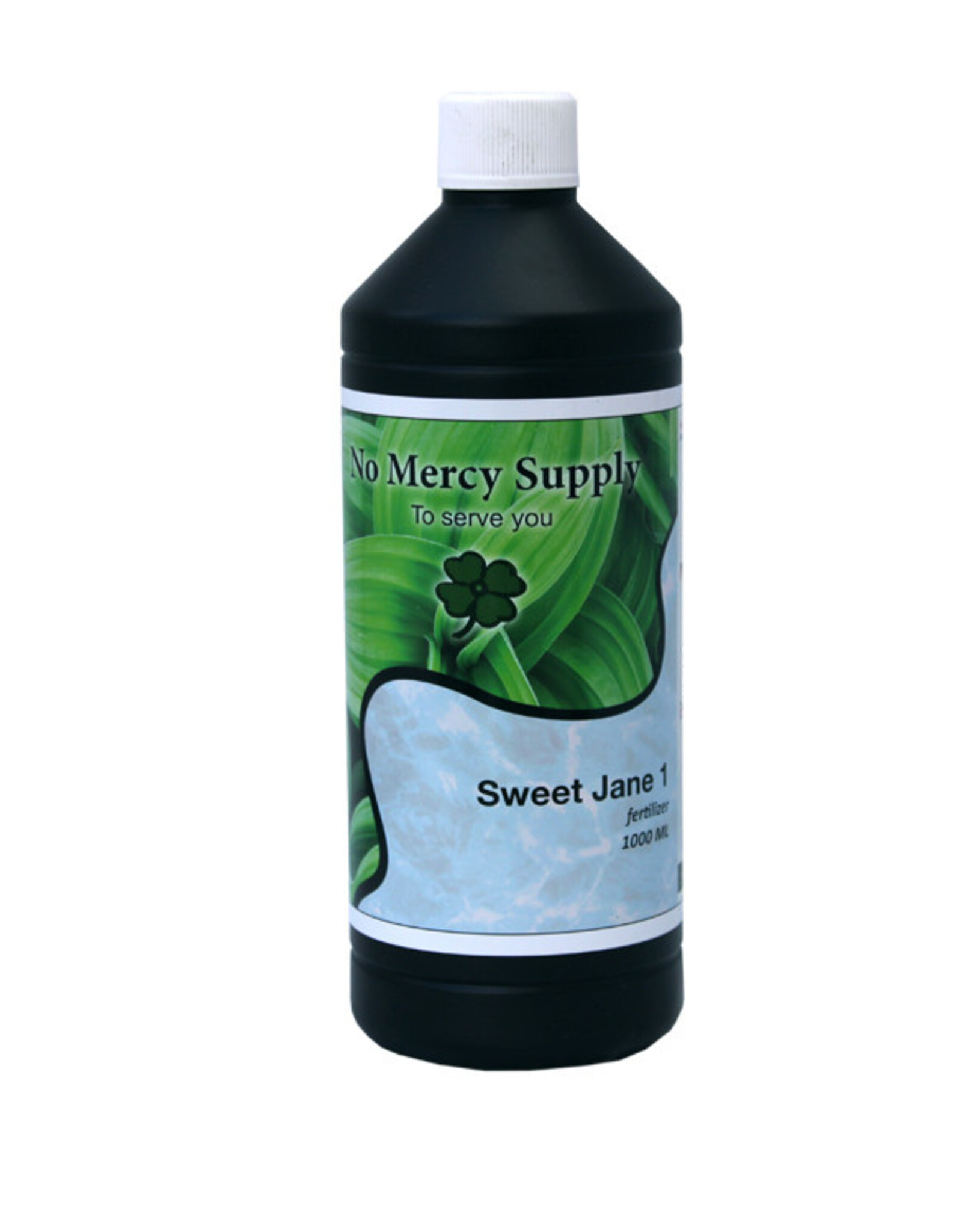No Mercy Supply sweet jane1 1L
| Availability: | On backorder |
NO MERCY SUPPLY SWEET JANE 1 1 LITER
- The right tool for successful cultivation! -
Two biomineral nutrients for the flowering period. The trace elements in the mineral part are bound to chelate. The iron even on the Fe-EDDHA chelate, which is easily absorbed at all pH values. The biological part contains more than 30 trace elements, carbohydrates, amino acids and a plant hormone that stimulates chlorophyll formation.
Both a complete main diet and a biological stimulator in one.
Sweet Jane 1 for the first half of the flowering period (NPK 7-7-7);
Sweet Jane 2 for the second half of the flowering period (NPK 2-4-9) optional;
(It is therefore not a 2-component A and B power supply)
The recommended dosage for Sweet Jane 1 and 2 is a maximum of 10 milliliters per 2 liters of water for adult plants. Give it every watering. Halve the dose for plants smaller than 30 centimeters.
Why 2 feedings for the flowering period?
Because the nutritional needs of the plant during flowering are not always the same, the NPK ratio expires. In the first few weeks of flowering, plants still grow and then no longer, a big difference! and so also in nutritional needs.
Feeding schedule
A feeding schedule for ground is in fact very difficult to give because in many cases it has very little to do with the practical situation. Indeed, there are far too many variable factors. Just think, for example, of differences in the amount of soil that is used per plant, one grower 5 liters and the other 15 liters, that already results in a completely different feeding schedule, and then again the composition of the soil, which is also different everywhere is, and so on.
Not a feeding schedule, but instead a number of important things to pay attention to when feeding in the practical situation:
When the temperature rises, the dosage must be reduced because the plant will then absorb more water. A high nutrient dose combined with a high temperature can produce burnt plants;
Reduce the dosage with slow-growing, stagnant or diseased plants;
More soil means less feeding;
Take into account the EC value of the soil you start with when you start feeding. When soil is pre-fertilized, it is better to start feeding after a few weeks. For that initial phase it is best to use leaf nutrition so that you are sure that the plants receive all trace elements and contain the EC value of your soil.
Especially when growing on soil, we run the risk of giving N, P, or K too much. That which we give too much is not absorbed by the plant and remains in the soil. After a while, the EC value of your soil can become too high. A too large stock of certain fertilizers is created. This works to the disadvantage of the plants, they will have difficulty absorbing water. Moreover, a high concentration of minerals in the medium is bad for soil life. That is why it is important to feed as much as possible to size in order to prevent surpluses that are too large later in the culture. It is a question of foresight feeding, especially when it comes to soil cultivation, after all, you cannot flush on soil without this resulting in too wet soil.
Roots absorb water most easily from a nutrient solution with a low concentration of elements, so at a low EC. The concentration of ions in the plant cell is then higher than outside and that produces an osmotic effect: The water is simply drawn into the cell. It becomes more difficult if the water outside it already has a high concentration of ions (a high EC). The plant must then make internal adjustments to develop sufficient suction power. With a rising EC, production initially does not decrease, but water intake does. With a further increase in EC, the plant will start producing less.



